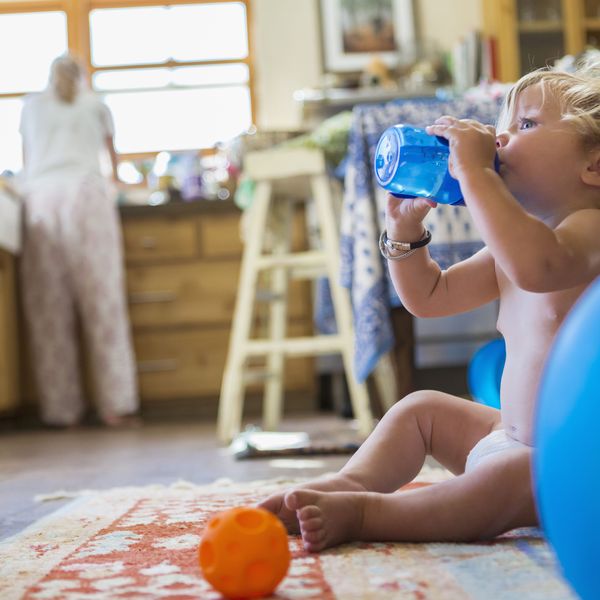Elevated Rates of Thyroid Cancer Found in Fukushima Youth
Over 100 Fukushima youth diagnosed with definitive or suspected thyroid gland cancer
The number of Fukushima youth diagnosed with definitive or suspected thyroid gland cancer now reaches 104, according to a Japanese newspaper's analysis of government data.
There were 300,000 total youth in the Fukushima prefecture who were aged 18 or younger at the time of the 2011 Fukushima nuclear disaster. Of the 104 children whose government-administered thyroid gland tests showed positive results, 57 have been diagnosed with a definitive case of the disease, which is frequently linked to radiation exposure, Asahi Shimbun reported Sunday.
Government officials deny any link between the diagnoses and the nuclear accident. However, when compared with thyroid cancer rates at nearby prefectures, the Fukushima average of more than 30 people per population of 100,000 ranks "much higher." For example, the development rate of thyroid cancer among late teens in the Miyagi Prefecture is only 1.7 people per 100,000.
According to the report, after the 1986 Chernobyl nuclear disaster, thyroid cancer rates only began to rise after four years. However, scientists hope that with updated "high-precision tests" and increased monitoring, diagnoses will come sooner.
"We must continue closely examining the people's health in order to determine the impact of radiation exposure on causing thyroid tumors," Yoshio Hosoi, professor of radiation biology at Tohoku University, told Asahi Shimbun.
An Urgent Message From Our Co-Founder
Dear Common Dreams reader, The U.S. is on a fast track to authoritarianism like nothing I've ever seen. Meanwhile, corporate news outlets are utterly capitulating to Trump, twisting their coverage to avoid drawing his ire while lining up to stuff cash in his pockets. That's why I believe that Common Dreams is doing the best and most consequential reporting that we've ever done. Our small but mighty team is a progressive reporting powerhouse, covering the news every day that the corporate media never will. Our mission has always been simple: To inform. To inspire. And to ignite change for the common good. Now here's the key piece that I want all our readers to understand: None of this would be possible without your financial support. That's not just some fundraising cliche. It's the absolute and literal truth. We don't accept corporate advertising and never will. We don't have a paywall because we don't think people should be blocked from critical news based on their ability to pay. Everything we do is funded by the donations of readers like you. Will you donate now to help power the nonprofit, independent reporting of Common Dreams? Thank you for being a vital member of our community. Together, we can keep independent journalism alive when it’s needed most. - Craig Brown, Co-founder |
The number of Fukushima youth diagnosed with definitive or suspected thyroid gland cancer now reaches 104, according to a Japanese newspaper's analysis of government data.
There were 300,000 total youth in the Fukushima prefecture who were aged 18 or younger at the time of the 2011 Fukushima nuclear disaster. Of the 104 children whose government-administered thyroid gland tests showed positive results, 57 have been diagnosed with a definitive case of the disease, which is frequently linked to radiation exposure, Asahi Shimbun reported Sunday.
Government officials deny any link between the diagnoses and the nuclear accident. However, when compared with thyroid cancer rates at nearby prefectures, the Fukushima average of more than 30 people per population of 100,000 ranks "much higher." For example, the development rate of thyroid cancer among late teens in the Miyagi Prefecture is only 1.7 people per 100,000.
According to the report, after the 1986 Chernobyl nuclear disaster, thyroid cancer rates only began to rise after four years. However, scientists hope that with updated "high-precision tests" and increased monitoring, diagnoses will come sooner.
"We must continue closely examining the people's health in order to determine the impact of radiation exposure on causing thyroid tumors," Yoshio Hosoi, professor of radiation biology at Tohoku University, told Asahi Shimbun.
The number of Fukushima youth diagnosed with definitive or suspected thyroid gland cancer now reaches 104, according to a Japanese newspaper's analysis of government data.
There were 300,000 total youth in the Fukushima prefecture who were aged 18 or younger at the time of the 2011 Fukushima nuclear disaster. Of the 104 children whose government-administered thyroid gland tests showed positive results, 57 have been diagnosed with a definitive case of the disease, which is frequently linked to radiation exposure, Asahi Shimbun reported Sunday.
Government officials deny any link between the diagnoses and the nuclear accident. However, when compared with thyroid cancer rates at nearby prefectures, the Fukushima average of more than 30 people per population of 100,000 ranks "much higher." For example, the development rate of thyroid cancer among late teens in the Miyagi Prefecture is only 1.7 people per 100,000.
According to the report, after the 1986 Chernobyl nuclear disaster, thyroid cancer rates only began to rise after four years. However, scientists hope that with updated "high-precision tests" and increased monitoring, diagnoses will come sooner.
"We must continue closely examining the people's health in order to determine the impact of radiation exposure on causing thyroid tumors," Yoshio Hosoi, professor of radiation biology at Tohoku University, told Asahi Shimbun.

